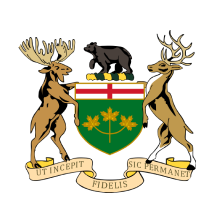OTTAWA — Canada is bracing for continued wildfire activity as summer progresses, according to a recent update from federal officials. Emergency Management Minister Eleanor Olszewski warned that western provinces and the East Coast should remain vigilant.
The forecast indicates that large areas of British Columbia and the prairie provinces will experience drier and hotter conditions than usual. Federal forecasters predict above-average temperatures across most of the country for the next three months.
Typically, fire activity in northern regions begins to decline in September as cooler weather arrives and daylight hours shorten. However, this year is different. Federal officials have stated that the significant fires currently burning are likely to persist into the fall due to elevated temperatures.
“Wildfire season’s not slowing down,” Olszewski said during a virtual press conference in Ottawa on Monday. “Across the country, it’s been a really hot and dry summer, and this has of course contributed to above-normal fire activity with fires in mainly British Columbia, Manitoba, Saskatchewan, and more recently in Newfoundland and Labrador, New Brunswick, and Nova Scotia.”
Recent heat waves and dry conditions have heightened concerns about wildfires in Atlantic Canada, where 21 fires are currently active, each covering areas larger than 1,000 square kilometers.
Olszewski noted that this wildfire season is now the second worst on record in terms of total land burned. Data from Public Safety Canada reveals that 78,000 square kilometers have burned so far this year, surpassing the size of New Brunswick. This figure is the second highest recorded, following 2023, and is more than double the 10-year average.
Currently, there are 707 active fires across Canada, with 68 classified as out of control. Since April, 165 emergency events have impacted 134 First Nations communities, leading to 88 evacuations, according to Indigenous Services Minister Mandy Gull-Masty.
Firefighting efforts are underway in every province and territory. Approximately 563 firefighters are actively combating the blazes, including personnel from six countries: the United States, New Zealand, Australia, Costa Rica, Chile, and Mexico. Over the summer, around 1,600 international firefighters have been deployed to assist with the ongoing crisis.

 Local News in Ontario
Local News in Ontario

 Global News
Global News The Chronicle-Journal
The Chronicle-Journal The Hamilton Spectator
The Hamilton Spectator CBC News
CBC News The Province
The Province Seaforth Huron Expositor
Seaforth Huron Expositor Ottawa Citizen
Ottawa Citizen The Toronto Sun MMA
The Toronto Sun MMA Salon
Salon CBS News
CBS News The Babylon Bee
The Babylon Bee FOX Business Video
FOX Business Video